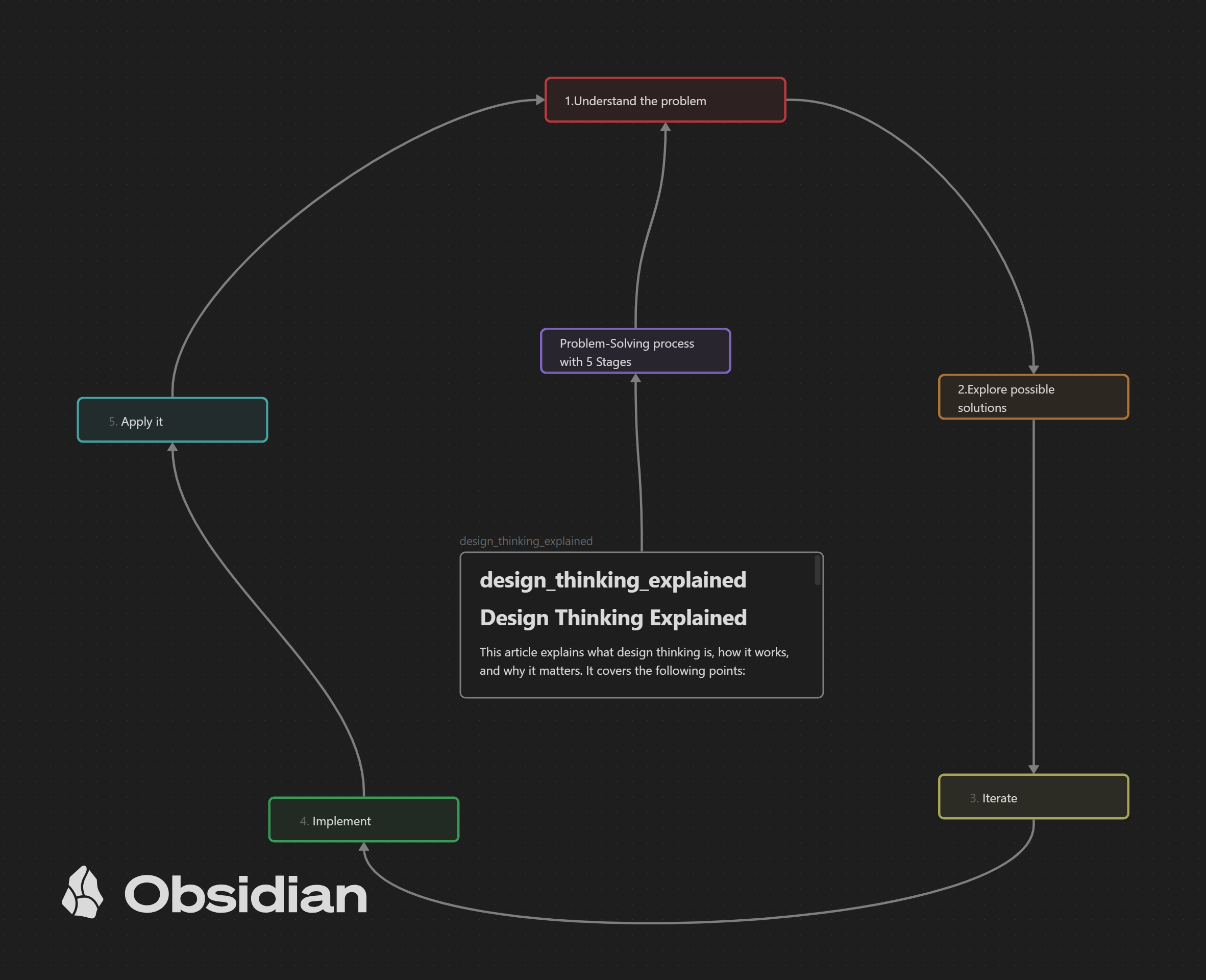Tech-Notes
Blog de notas sobre Software, Ingeniería y Tecnología
Project maintained by matiaspakua Hosted on GitHub Pages — Theme by mattgraham
Design Thinking Explained
The article explains what design thinking is, how it works, and why it matters. It covers the following points:
- Design thinking is an innovative problem-solving process that begins with understanding unmet customer needs and involves concept development, applied creativity, prototyping, and testing.
- Design thinking can be applied to any problem that needs a creative solution, not only to physical products, but also to services, business models, and social issues.
- Design thinking has five main steps:
- understand the problem,
- explore possible solutions,
- iterate through prototyping and testing,
- implement the design, and
- apply it to different domains.
- Design thinking requires a set of skills that can be learned and practised, such as empathy, brainstorming, modelling, analysis, and feedback.
- Design thinking can help executives across industries rethink their product offerings, grow their markets, offer greater value to customers, or innovate and stay relevant.

Example: global plattfom
Applying Design Thinking to standardize various software platforms into a global one involves a structured and iterative approach to problem-solving. Here’s a step-by-step example:
Step 1: Empathize
-
Understand Stakeholder Needs:
- Conduct interviews, surveys, or workshops with stakeholders from different regions and departments.
- Gather insights on their pain points, preferences, and expectations related to software platforms.
-
User Personas:
- Create user personas to represent different types of users across the organization.
Step 2: Define
-
Define the Problem:
- Synthesize the gathered information to define the core problems and challenges.
- Clearly articulate the goal of standardizing software platforms globally.
-
Establish Criteria:
- Identify criteria for success, considering factors like user satisfaction, efficiency, cost reduction, and scalability.
Step 3: Ideate
-
Brainstorming Sessions:
- Organize cross-functional brainstorming sessions to generate ideas for standardization.
- Encourage creative thinking without judgment.
-
Idea Prioritization:
- Use methods like dot voting or affinity mapping to prioritize and refine the most promising ideas.
Step 4: Prototype
-
Concept Prototyping:
- Develop low-fidelity prototypes or wireframes to visualize how the standardized platform might look and function.
-
Feedback Loops:
- Collect feedback from stakeholders and iterate on the prototypes accordingly.
Step 5: Test
-
Pilot Programs:
- Implement pilot programs in specific regions or departments to test the standardized platform.
- Gather user feedback and performance data.
-
Iterative Testing:
- Iterate on the design based on real-world feedback and experiences.
Step 6: Implement
-
Rollout Strategy:
- Develop a phased rollout strategy to implement the standardized platform across the entire organization.
-
Training and Support:
- Provide training and support resources to help users transition smoothly to the new platform.
Step 7: Evaluate
-
Key Performance Indicators (KPIs):
- Define KPIs to measure the success of the standardized platform.
- Monitor metrics such as user adoption rates, system performance, and cost savings.
-
Continuous Improvement:
- Establish mechanisms for continuous improvement based on ongoing feedback and changing organizational needs.
Step 8: Iterate
- Feedback and Adaptation:
- Continuously gather feedback from users and stakeholders.
- Iterate on the standardized platform to address emerging needs and challenges.
Additional Considerations:
-
Cross-Functional Collaboration: Encourage collaboration between IT, operations, and end-users throughout the process.
-
Change Management: Implement change management strategies to address resistance and facilitate a smooth transition.
-
Flexibility: Design the standardized platform with flexibility to accommodate diverse regional requirements.
- Communication: Maintain transparent communication to keep stakeholders informed about the progress and benefits.
Reference
- Design thinking, explained MIT Sloan